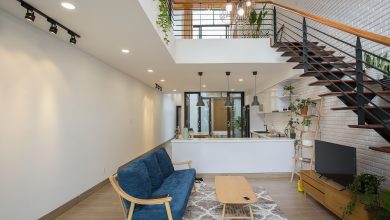
I’m a sorry clapper, swayer, or “So be it”- er, however at Harlem’s Abyssinian Baptist Church administration, the soul moves me. My old school cohort Robert, a New York City relocation from the South who goes to this noteworthy dark church, welcomes me to the 9 a.m. love administration for regulars (vacationers ought to go to the 11:30 a.m. administration, yet arrived right on time for seats). After two hours, we pour out, still high from the mixing message.
Music — from gospel to jazz to Afrobeat to salsa — is the soundtrack of this huge area of upper Manhattan, which by and large ranges north of Central Park to 155th Street. It’s a straight shot on the metro (around a little ways from midtown) to this area. With its own exceptional musicality, especially on a Sunday, when tunes of commendation exude from a significant number of the 400-a places of love, it draws in both ordinary churchgoers and guests from around the world.
Which began as a Dutch town in the seventeenth century turned into the undisputed focus of dark culture during the 1920s and ’30s, with the thriving of music, workmanship, writing, and activism that became known as the Harlem Renaissance. Josephine Baker, Duke Ellington, W.E.B. Du Bois and Jacob Lawrence all lived or went through here. A walk around focal Harlem resembles strolling through a set of experiences book, with the locales of earth-shattering occasions and awesome characters everywhere.
From the Abyssinian, it’s just a block to Strivers Row, a noble arrangement of nineteenth-century condos that were hesitantly made accessible to upwardly portable African Americans, or “strivers” (counting Scott Joplin, Eubie Blake, and W.C. Convenient), after whites had deserted the region. Today it’s safeguarded, part of the authoritatively assigned St. Nicholas Historic District.
To assist you with arranging your next huge excursion
Back on Lenox Avenue (otherwise called Malcolm X Boulevard), Harlem’s principal north-south drag, we turn south. A couple of chapels seem to be the Abyssinian — huge and elaborate with neo-Gothic structures and stained glass windows — yet most are customer-facing facades, wedged in among Harlem’s novel retail scene: bodegas, popular up-world music-CD booths, West African material stores, and fashionable person bistros.
For lunch, I need southern fare. We snatched two seats at the counter at Sylvia’s, established in 1962 by “the Queen of Soul Food” Sylvia Woods. Robert has covered chicken and waffles finished off with a bit of dissolving margarine. Port Charlotte Florida Car Service is also used for traveling to different areas for vacation. My cornmeal-crusted catfish and boiled eggs are the ideal Sunday guilty pleasure. Had we chosen to go cool instead of exemplary, we could have strolled another block to Red Rooster, VIP culinary expert Marcus Samuelsson’s mod interpretation of down-home cooking.
Malcolm meets Martin where Harlem’s principal north-south and east-west avenues cross: 125th Street, likewise called Martin Luther King, Jr. Avenue, has the milestone Apollo Theater. And they also provide Harlem car service. Numerous artists — from Ella Fitzgerald to Jimi Hendrix — had vocation leap forwards on its commended stage.
Harlem Features:
Our walk closes at a sculpture of the unbelievable Duke Ellington and his terrific piano. We’re going to midtown, yet I feel like I’ve just skimmed the outer layer of this socially rich area. Not to stress, Robert reminds me: “You can continuously take the A train back up.”
Hamilton Grange:
Initial architect Alexander Hamilton resided in this early Federal-style home back when Harlem was a provincial retreat. The house is currently a National Park Service site you can visit for nothing; open Wednesday through Sunday.
Minton’s Playhouse:
Laid out in 1938 by saxophonist Henry Minton, this club charges itself as the origin of present-day jazz or bebop. Stars, for example, Thelonious Monk, Charlie Parker, and Billie Holiday once performed there. Hold a table to see jazz legends and promising new kids on the block.
Langston Hughes House:
The writer resided in this column house at 20 East 127th St. throughout the previous 20 years of his life. You can see his typewriter and piano in the parlor. Free, however, a $5 gift is recommended; open Tuesday, Thursday, and Saturday.
Apollo Theater:
The celebrated venue holds a Wednesday Amateur Night (tickets start at $22), where you could see the following Sarah Vaughan.
Sylvia’s:
An exemplary southern fare cafe at 328 Malcolm X Blvd., somewhere in the range of 126th and 127th Streets, serving all that from grilled ribs with Sylvia’s “Cheeky Sauce” to okra and tomato gumbo.
Abyssinian Baptist Church. A Harlem installation established in 1808 invites sightseers to its 11:30 Sunday administration (which frequently doesn’t wrap up until 1:30 or 2:00). Dress fittingly — no flip-flounders and shorts, for example. At 132 Odell Clark Place (previously 138th Street).
Buy into Sisters from AARP, a free week-by-week bulletin observing Black ladies conveyed directly to your email.


